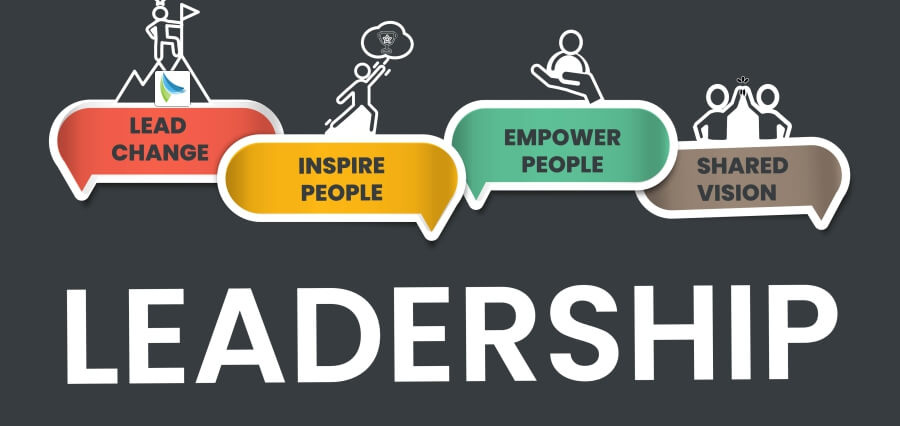Evolving the Leader Within
Leadership, when examined closely, is not a matter of titles, hierarchy, or authority—rather, it boils down to the impact a person makes, their own development, and the brave act of reaching out to others. For a long time, leadership meant one having control: the power to order, decide, and command. However, plus in the world where sincerity and quickness count even more than might, leadership is gradually changing. Those leaders who are able to keep their hold and actually thrive in the new environment are the ones to be found among the leaders of today—they have transformed their leadership style from control to connection, from a stance of dominating people to one of cooperative leadership with people.
The Old Paradigm: Leading Through Control
Historically, the ability to maintain control was looked upon as the principal characteristic of good leadership. Leaders were generally portrayed as people with great authority – logical, decisive, and unemotional. This pattern of leadership was effective in a time when stability was still considered more important than inventiveness, and obedience was preferable to partnership. In this type of surroundings, control would restore order, but at the same time, it would discourage new ideas and possibilities.
Control-centered leadership is mostly fearful leadership—fear of error, of disorder, of losing one’s grasp on things. It is preoccupied with the fixing of results through tight control rather than with the freedom of the process. And although it can bring about short-term gains in terms of efficiency, it hardly ever sets the grounds for long-term commitment and innovation.
Personnel working under authorities that exercise control over their subordinates are generally willing to follow orders but are not enthusiastic about the company goals. They do not show a great deal of initiative while following the instructions they receive. So, the outcome? Companies that are run effectively but lack leadership—well-organized, yet without any potential for growth.
The Inner Work of Evolution
In order to function as a leader who connects instead of controlling, one needs to internally evolve—a process of unlearning and rediscovering oneself. This one requires the attributes of vulnerability, bravery, and also the humility to admit that growth is possible not only for the team members but for oneself.
Such transformation usually looks like this:
From Commanding to Coaching
Instead of providing ready-made solutions, the mature leader through the power of questioning calls into action the team members’ potential. Coaching is a way that brings forth ownership and confidence, hence, giving the power to others to think independently and make decisions without hesitation.
From Perfection to Progress
Aiming for perfection most of the time is what makes one desire to control. The mature leader prioritizes learning from the process over perfect execution, and therefore, he views mistakes not as failures but as feedback cycles for further development.
From Fear to Trust
Fear of losing relevance or authority is what scares most of the controllers hence that is where the control thrives from. On the other hand, connection depends on trust, which is a belief not only in one’s self but also in others and the process. Trust turns more frequent collaboration than supervision.
From Transaction to Transformation
Transactional leadership usually focuses on measuring output while transformational leadership nurtures evolution. The attention is first on performance metrics, then on personal and professional development.
From Hierarchy to Humanity
Leadership is no longer defined by titles but by the power of relationships. The evolved leader is a human first and a boss second, thus he/she not only practices but also believes in and teaches empathy as well as efficiency.
The Cultural Ripple Effect
Control-to-connection leader behavior change has a profound impact on organizational culture. It causes the flattening of hierarchies, widening of communication channels, and enhancement of innovations. Thus, employees begin to talk more, share ideas, and take initiatives because they feel safe and recognized.
This radical change resulted in what psychologists refer to as psychological safety—that is a work culture where people are not afraid of making mistakes, questioning, or challenging. To creativity and accountability to become a natural and harmonious pair is what characterizes such environments. The employees there are not in need of being managed; instead, they are self-driven, and their guide will be the common values and trust.
Conclusion
The evolution of leadership is not about giving up control—it’s about elevating it with spirit. The leader who is connected not only leads the teams but also builds trust, energizes purpose, and creates belonging.
Being able to connect is as revolutionary as the world is becoming more and more divided and distracted. To bring out the leader in you is the way that you would pick courage instead of staying in your comfort zone, be authentic rather than creating an image and having empathy instead of ego.
In the long run, leadership that connects is leadership that lasts. Such leadership not only creates successful organizations but also the positive experiences of the people involved. Because, ultimately, leadership is not about the extent of control we have—it’s the depth of our connection, the bravery of our caring and the degree to which we inspire others to become their own leaders that truly matter.












